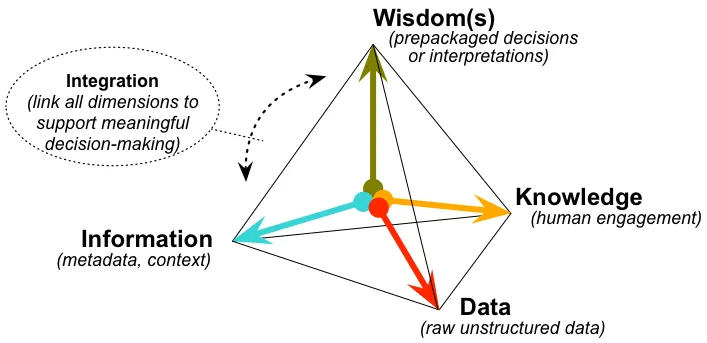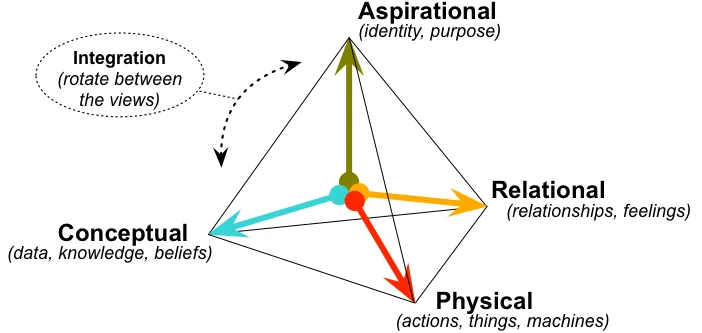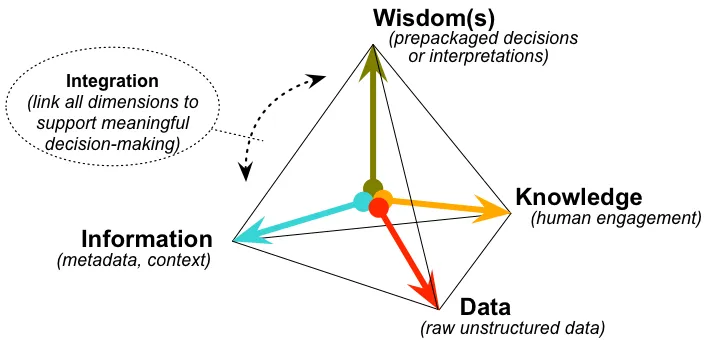What is knowledge?
Blog: Tom Graves / Tetradian
What is knowledge? And what is its relation with data and information – or wisdom, for that matter?
The starting-point for this was a question on LinkedIn from Josef Miklos, over in the Czech Republic:
I am struggling with the nature of “knowledge” … Do you consider knowledge as a virtual asset? Thanks for any hints!
My short-answer on that, as I replied to Josef, would be that knowledge is information made personal – information that we ourselves can then put to practical use. Josef then wrote back:
Yes, that makes sense. It is nothing special, just a piece of information, that can be actionable. (The value is in the use of it and it depends if the resulted action is effective). The personality aspect is what makes knowledge transfer a problem. That way I can say: knowledge is information applied within the action, which leads as a whole to goal achievement. That leads me to question whether that knowledge can exist without action. Probably yes, and before using it has just proposition of the value.
All of which in turn makes sense to me. It does seem, though, that I need to expand on this a bit – take it a bit further, a bit deeper. The crucial point here is that knowledge is often presented as being one stage or level within a kind of hierarchy or stack:
data -> information -> knowledge -> wisdom
…with ‘wisdom’ as the end-point of the hierarchy, the pinnacle of the pyramid, the top of the stack. Yet as I wrote back in 2012, in my post ‘Rethinking the DIKW hierarchy‘, this construct doesn’t actually make much sense as a linear sequence or stack: for example, we have many supposed ‘wisdoms’ – such as proverbs, or ‘the moral of the tale’, or even our so-called ‘best practices’ – that are of little practical use until we can find a suitable context for which they would fit. Instead, the relationships between data, information, knowledge and wisdom actually make more sense as discrete, distinct dimensions denoting and delineating a kind of ‘knowledge-space’:

…which in turn lines up quite well with the tetradian asset-dimensions:

…which would then give us a correlation or cross-reference somewhat like this:
- Data: the content (often, or even usually, about something tangible) that underpins the meaning
- Information: the context-frame or conceptual schema within which content could be placed
- Knowledge: the connections that link items and context in relations with each other, and in personal use
- Wisdom: an overlay of abstractions to give guidance on purpose or meaning, in terms of aim or aspiration
If so, then yes, the supposed ‘stack’ is indeed one way to make sense of the relationships between that set of dimensions: raw data is placed within a schema, as information, which is then put to practical use as knowledge, and from which abstractions about ‘wisdom’ can be derived. Yet that’s only one amongst many possible pathways through that dimensional space – and others amongst the full set of possible pathways can imply a swathe of real-world oddities and antipatterns that can create all manner of unexpected ‘gotchas’ or potential sources for failure. For example
- ‘body-knowledge‘ represents raw real-world data that has been acquired, built into a personal schema (personal information), underpins personal skill and usage (personal knowledge) and may even represent personal best-practices (personal wisdom) – yet cannot be transferred directly to anyone else, and may also be different from that of anyone else
- a CRM (Customer Relationship Management system) may represent raw-data about past relationships with people, processed into a schema, and used to derive ‘best-practices’ (‘wisdom’) – yet may be worse-than-meaningless wherever it does not relate to present real-world data about that relationship
- a ‘knowledge-base‘ represents real-world data linking to personal use (knowledge) and abstractions from shared-practice (wisdom) – yet may be meaningless outside of the exact context (schema for information) from which it was derived
- raw-data are the basis for everything related to knowledge and the like – yet are essentially meaningless without some kind of schema and metadata to provide context and a framework for interpretation
- principles provide practical ‘wisdoms’ for practical use – yet are essentially meaningless without real-world context and real-world raw-data
In that sense, the notion of ‘knowledge’ can be a lot trickier than it looks. In English, for example, we might say “I know that”, when what we mean is “I have that information” – which is very different from “I know what that information means”, or “I know how to use that information in my own real-world practice”. At all times, and in all contexts, we need to clear as to what we mean by data, information, knowledge and wisdom – and don’t mix them up!
